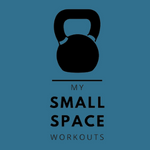We’ve all heard about the 30-day push-up challenge, in its various forms. If you’ve been a regular lifter of weights, you’ve probably even laughed at the low rep-count of many of these “challenges”. I certainly did, still thinking I was capable of busting out a set of 100 press ups like I did 20 years ago… then I actually tried and… ouch!
Okay so I can still comfortably hit 30, but it got me thinking about the reasons why I can’t do push-ups like I used to.
It seems I’m not alone either, as online forums are full of people asking the same question.
If you simply can’t do a push-up having previously been able to, then it may well be a joint or tendon issue that is stopping you in your tracks. You’ll know if this is the cause of the problem because of the pain you will feel and your elbows and/or shoulders when trying to perform the move. Don’t panic, we have a simple fix.
Are Joint Issues Stopping You From Doing Push Ups?
Tendinitis in the shoulder or elbow can cause a lot of pain and can actually stop you from being able to perform a push-up.
While these soft tissue injuries generally heal over time, they will need you to rest the joint for a prolonged period of time.
More serious injuries however, such as a glenoid labrum tear, may require surgery if the usual treatments of anti-inflammatory drugs and rest prove to be unsuccessful.
Because our joints are complicated you would be best advised to seek the opinion of your healthcare professional and if possible a physiotherapist to asses the extent of your injury.
It goes without saying that we should do everything possible to avoid injuring our shoulders so that we are never faced with the prospect of an extended lay-off in our training.

One thing we can do to protect ourselves, is to stretch. I’ll talk more about that later, but in the meantime check out this gentle shoulder stretching drill from Bob & Brad:
Is Muscle Wastage The Reason You Can’t Do Push Ups Anymore?

It may be that the reason that you can’t do push-ups anymore is that you’ve not been exercising and your muscles have simply wasted away.
As we get older men make less testosterone and it becomes more difficult to build and retain muscle. This means that when we stop training we lose the muscle we once had – and it can happen quickly too – especially if you’re not eating all that well.
The good news is that if muscle wastage is the reason that you can no longer do push-ups, there are plenty of things that you can do to turn the situation around.
I go deep into sarcopenia (age related muscle wastage) in this article and strongly recommend that you read it. However, in a nutshell you need to:
Eat right: that means plenty of fruit and vegetables and good quality protein from a variety of sources.
Do regular resistance exercise: whether by free weights, bodyweight or machines, you need to start working those shrinking muscles.
Harness the power of your in-built anabolic steroid factory: go and read the article I link to above for more information on how to do this.
So there is no need to be a victim of the ravages of time. Rather than accepting physical frailty, take action and go to war against age and weakness!!
Is Your Core Weak?

The common reason why people can’t complete a push up with proper form is that they suffer from a weak core.
This has become especially problematic in recent years with generations of us having been brought up in front of TV’s and computer games compounded by the rise in sedentary lifestyles in adults. Recent generations have been deprived of the fundamental strength, conditioning and stability that comes with outdoor play.
Ironically, it’s also possible to build very strong muscles by spending hours lifting weights, yet still have a weak core.
If this is you, again, the good news is that you can fix this yourself if you’re prepared to stick to a plan or training program designed to specifically address the core.
To get you started on building core strength we recommend that you make a daily practice of the following exercises:
Plank
- Take a face down lying position with your forearms on the floor and your elbows under your shoulders.
- Your hands should be facing forward so that your arms are parallel.
- Your legs should be straight out behind you and you should be up on your toes.
- Your body should form one straight line from your shoulders to your heels.
- Engage your abs (imagine bringing your belly button in to touch your spine.
- Keep your lower back straight – don’t let it round.
- Keep your head neutral so that your eyes are fixed on your hands.
- Throughout the hold, ensure that you maintain the position of your butt – don’t let it drop or rise towards the ceiling.
- Hold this position.
Start with 3 sets of 30 seconds and over time, increase both duration of the hold and the number of sets.
The Dead Bug
- Lie on your back with arms stretched toward the ceiling.
- Bring your legs up with a 90 degree bend at the knees, which should be directly over your hips.
- This will be your starting position.
- Stretch your right leg out straight (not letting your heel touch the floor), while at the same time reaching your left arm overhead.
- Keep your back pressed into the floor by keeping your core engaged throughout the movement.
- Return your arm and leg back to the starting position.
- Repeat on the other side.
That’s 1 rep
Start with 2 sets of 10 reps.
A Simple Fix For When You Can’t Do Push Up
The simplest way to build some strength and tone into your chest, shoulders and triceps when you can’t do a press up, is to use resistance bands.
You can read my guide to the best resistance bands with handles and learn what to look for when buying them. Many people have the looped style of resistance bands, rather than bands with handles, so you have two instruction variations depending on the type of resistance bands you are using.

Looped Band
Place the band underneath your armpits and behind your back. Loop the band around your hands to adjust the slackness to achieve your desired resistance.
Either adopt a split-stance or stand square, but do gently dip your knees.
Brace and extend your arms out in front of you.
Hold at the “top” of the movement and slowly return your arms to the starting position.
Resistance Bands with Handles
Place the door anchor that came with your resistance bands either above your door or underneath it.
Stand with your back to the door and take hold of each handle.
Keep your elbows close to your body, thumbs and palms facing your chest.
Take a step forwards so that the bands are tensioned and place one foot in front of the other so that you are totally stable.
This is your starting position. From here, engage you chest and push the bands forwards, locking your elbows.
Slowly return to the starting position keeping elbows down and close to your rib cage. Keep the tension in the chest and allow the bands to pull your hands back to the starting position in 2.
Aim to build up to 3 to 5 sets of 20 reps – or for a more comprehensive chest workout using bands, see our article on the ultimate resistance band chest workout.
Resistance bands are the simple fix you need when you find that you can no longer do a pushup. Even when you have joint issues, resistance bands can be used safely, providing that your sensible and don’t overdo your workout and back-off if you feel any pain.
By using resistance bands, you’ll begin to regain the strength you’ve lost and you should be able to do press-ups again in no time at all.
Final Thoughts
Before you go, let’s go back to Bob & Brad for some quality information about proper form when doing press ups. Watch this carefully, especially if you’ve hurt yourself in the past by performing push-ups incorrectly.
Don’t repeat the mistake of poor form.
Earlier in the article, we looked at Bob & Brad’s shoulder stretching drill and I said that I’d come back to the topic of stretching.
I have recently reviewed the Parabolic Stretching program having completed it myself. If you’re interested in becoming more flexible, protecting yourself from injuries and opening your body to new levels of muscular development, then read the review.
Read our review of the Hyperbolic Stretching Program and learn how we got flexible fast.
I hope that you now understand what factors may have led to you asking why can’t I do push ups anymore? and that you also know what you’re going to do to get your strength back.

